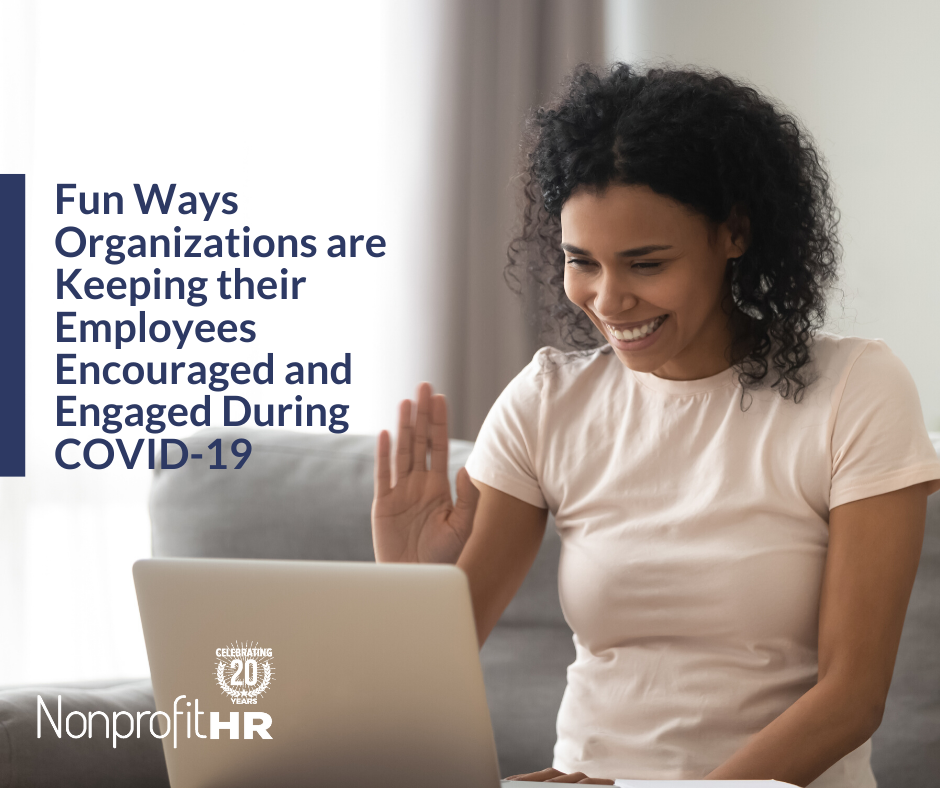WTOP: 5 ways nonprofits can…
At Nonprofit HR, we believe talent is key to furthering your organization’s mission. Your organization is only as good as its talent pool. Therefore, it’s essential to develop recruiting strategies that reach competitive job-seekers who fit your workplace culture and subscribe to your mission.
Are you failing to recruit top performers? Read on for the mistakes you might be making and what to do about them.
Not being intentional about your employment brand
Before you post another position, do you how your organization’s employment brand is speaking about your organization and to potential job seekers? How you position yourself with high performing talent is as important as how you position yourself with your potential donors. What does your website say about your organization as an employer? Is it easy to find information about your workplace culture, benefits and career opportunities? Do you have a presence on all of the major social channels (LinkedIn, Twitter, Facebook)? Is there consistency between what you say online about your organization and what your current employees are saying about you? Have you read your organization’s profile on Glassdoor? Do you have one?
These are just some of the questions you must ask yourself before you launch your next search. Today’s top performers do more research on their potential future employers than ever before. How you present as an employer is as important as the position you are trying to fill. Tuning in to and being consistent and effective with your organization’s employment messaging is an important first step.
Not posting to the right job sites
Every job board has a different audience. If you’re not aware of who’s looking on Craigslist for a job and how they’re different than the person checking Idealist, you may be targeting the wrong population.
Take some time to research demographic trends and the niches that different job boards cater to. You’ll find that the majority of baby boomers use sites like CareerBuilder and Monster, while millennials are likely to find career opportunities through social media or Google searches and are often job board-agnostic. If they do use job boards, they’ll often seek out industry or job-function specific career sites. When you’re tuned in to these trends, you’ll be better equipped to target the kinds of people you want to hire.
Not diversifying recruitment strategies
While targeting the right people on job boards and through social is essential in today’s recruiting efforts, it’s equally important to make sure you are using a wide variety of channels to let potential hires know you’re on the search. Use social media, job boards, word-of-mouth and your existing network to find potential hires—you’ll find different kinds of candidates through each.
At the same time, keep in mind not every great candidate is actively looking for a new position. Be proactive in your recruitment strategies by identifying potential employees that haven’t reached out to you first. LinkedIn is a great source for targeting passive job seekers. Three out of four full-time employees are either open to or actively looking for new employment opportunities, so don’t be afraid to reach out. Let passive candidates know you’re interested in their background and expertise, and invite them to connect with you so that you can learn more about their career interests and aspirations. With passive job seekers, it’s about them, not your organization – at least initially. Once you have an understanding of what might encourage them to consider other options, you can introduce your organization, its mission and culture and why your nonprofit and your available career opportunity would be a good next step for them. While some may not be looking for a new position, there are others who will be motivated by the right invitation.
Not having a solid candidate experience
Even if you’re confident in your talent pool, your hiring process may be turning candidates away after they submit their resumés. It’s essential to make every interaction with your organization a positive one, from the time a candidate sends in their letter of interest to the day they get hired (and beyond). During the application process, candidates interview you as well: they look at how willing you are to invest in them, they analyze the quality of the questions you ask and they evaluate how well-positioned your organization seems to create the career experience they are seeking. Their perceptions can make or break your recruitment process beyond their specific interview, as well. 51 percent of applicants share their positive candidate experiences on social media. Those positive comments can help your brand, but negative comments can result in a lasting reputation with other high performers and send the message that your nonprofit may be an undesirable place to work.
To optimize your candidate experience, remember the golden rule: treat candidates as you would like to be treated if you were currently seeking a job. Stay in close communication with top applicants during the entire process, communicate quickly with those applicants that you know do not fit your criteria, and acknowledge questions and submissions in a timely manner. Show your culture proudly and truthfully, and let applicants get a feel for your team and your and office. By doing so, you create the kind of positive experience that doesn’t just impact recruitment, it helps you maximize retention and loyalty into the future.
Need more advice on where to find and how to recruit talented, mission-focused individuals? Contact our HR Consulting experts.

































